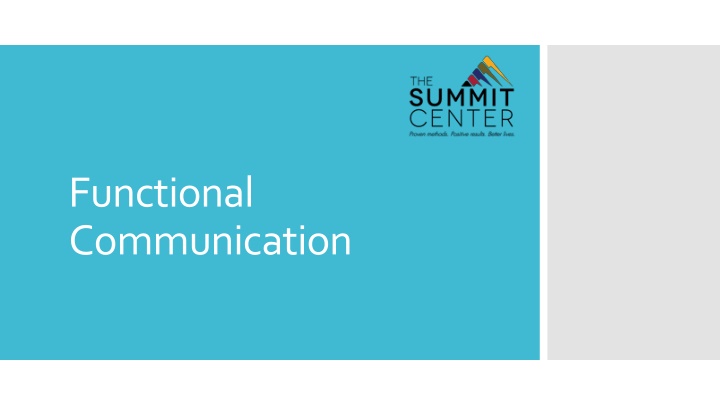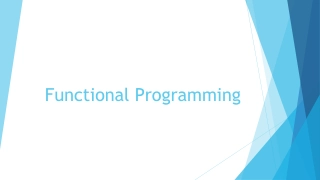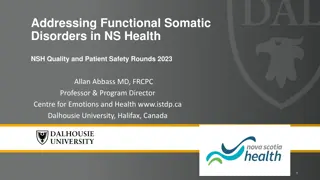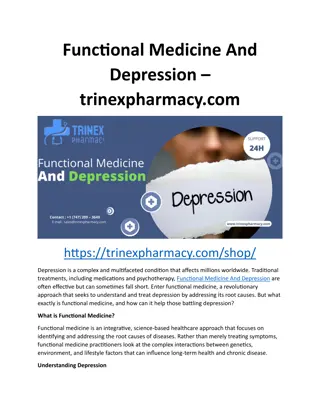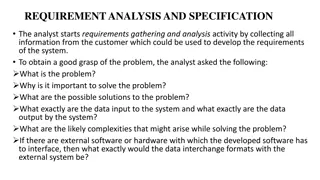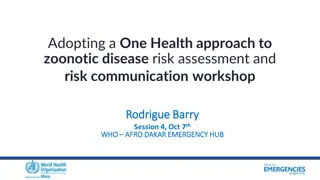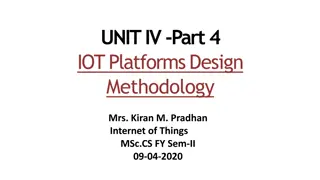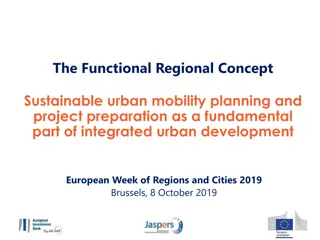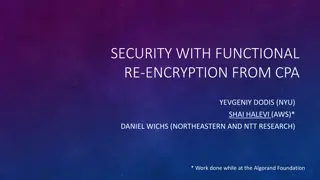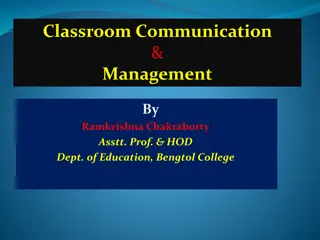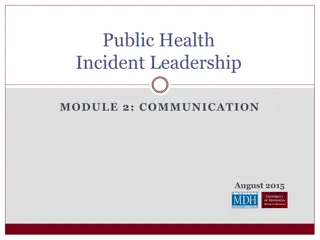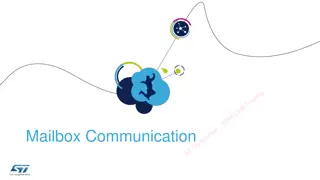Functional Communication
Practical strategies for teaching functional communication skills to individuals, focusing on using appropriate behaviors to express needs, wants, and feelings. Learn about the Differential Reinforcement and Functional Communication Training methods, along with tips on manipulation of the environment, shaping replacement behaviors, and monitoring progress in communication development. Understand the importance of primary speech-language impairments in implementing effective communication interventions.
Download Presentation

Please find below an Image/Link to download the presentation.
The content on the website is provided AS IS for your information and personal use only. It may not be sold, licensed, or shared on other websites without obtaining consent from the author.If you encounter any issues during the download, it is possible that the publisher has removed the file from their server.
You are allowed to download the files provided on this website for personal or commercial use, subject to the condition that they are used lawfully. All files are the property of their respective owners.
The content on the website is provided AS IS for your information and personal use only. It may not be sold, licensed, or shared on other websites without obtaining consent from the author.
E N D
Presentation Transcript
Functional Communication
Presenters Rachel Epstein M.S. Ed. CCC-SLP Amy Armstrong M.S. Ed. BCBA, LBA E-mail: aarmstrong@thesummitcenter.org E-mail: repstein@thesummitcenter.org 716.629.3400 Ext. 1815 [office] 716.799.8524 [office]
Definition: Appropriate behavior that expresses needs, wants, feelings, and preferences that others can understand. Functional Communication When individuals learn functional communication skills, they are able to express themselves without resorting to challenging behavior or experiencing communication breakdown.
Differential reinforcement (DR) procedure in which an individual is taught an alternative response that results in the same class of reinforcement identified as maintaining problem behavior. And the problem behavior is placed on extinction. Requires expertise in school psychologist/couselor/ BCBA for monitoring/adjustments with oversight from SLP and instruction from teacher. Requires a Functional Behavior Assessment and ABC data. Functional Communication Training (FCT) Identify interfering behavior that is serving as some type of communication function. Identify a replacement behavior as a substitute for the interfering behavior. May begin at a step well below the student s communication ability. Design and implement data collection procedures.
Manipulation of the environment to elicit interfering behavior. Planning opportunities for generalization. Prompting learners to use replacement behavior. Not reinforcing the interfering behavior. Providing immediate reinforcement for replacement behavior initially. FCT Plan needs to include shaping and fading prompts. May require skill building in related areas (waiting, excepting when not available) Increasing time between replacement behavior (communication) and reinforcement Monitor learner progress.
Start out as planned and systematic. Current ability determines reaction to communicative attempt. Functional Communication Teaching Start with highly motivating items/activities to request. Everyday contexts with familiar adults and peers. Should extend throughout the entire day.
Primary speech-language impairments: Ability to understand or process language (receptive language) Students with Autism Ability to communicate or express oneself (expressive language & speech production) Social interaction (pragmatic language)
Develop Language Intervention Approach Determine what skills the student has Choose Functional targets Decide mode of communication that should be used for each skill
Emphasis on function and biggest barrier: Varies in its expression and may include personalized movements, gestures, verbalizations, signs, pictures, words, and output from augmentative and alternative communication (AAC) devices Form of behavior that express needs, wants, feelings, and preferences that others can understand Selecting Functional Targets Communication that makes one s basic wants and needs known Does not need to be a complex thought Does not need to be verbal Skills that will promote independence Skills that will be useful (functional)for the individual
Collaborate with all staff to maximize instruction and positive student outcome Staff trainings Instruct on how to work on functional communication and expectations Receive updates on behavior management, discuss speech and language skills, carry-over, generalization Collaboration is Key! SLPs provide guidance on mode of communication to be used when writing behavior intervention plans Collaborate on what specific phrases or words the student will learn to functionally communicate his/her wants, needs, frustration, etc. Provide direction and feedback to classroom team to ensure language based instruction occurs throughout the day
Periodic communication with caregivers very important Communicate progress towards goals Frequency of communication typically depends on caregiver preferences Train caregivers on their child s communication Discuss success on targets at home Discuss mode of communication and how individual communicates at home Ways to facilitate communication at home Home/virtual visits to assess the function of communication at home and create a plan with caregivers Collaboration is Key! Collaborate on goals/targets to ensure skills are of significance/relevance to the family
Gestural Sign PECS SGD Verbal Modes of Communication Multimodal communication approach For example, if a student uses sign language and a speech generating device, we may initially teach the sign for bathroom so he/she can readily request in any situation If a student uses verbal speech, that may be his or her primary means of communication however, it may be used in conjunction with to another mode of communication for support or quicker results
Using sign language to communicate with others Often modified for individual learners, which can make it difficult for unfamiliar listeners to understand Modes of Communication Sign Barriers of using sign Functionality of sign Intelligibility across environments Peer and community interactions
PECS Picture Exchange Communication System Teaches learners to give a picture of a desired item to a communicative partner, who immediately honors the exchange by delivering the desired item Later phases of PECS goes on to teach discrimination and developing sentences to answer questions or comment A key feature is that you are immediately building in initiation by learners to have their wants and needs met Pairing exchange with verbal model of what the pictures represent throughout all phases, eventually building in a pause to try and evoke vocals from learner Modes of Communication PECS
SGDs speech generating devices (commonly known as devices) They are electronic alternative/augmentative communication devices (AAC devices) that use pictures for selection and a voice output to represent the selection made by the learner High Tech iPad (with app installed for this purpose, communication vs. leisure), DynaVox, Nova Chat Low Tech GoTalk, BIGmack Modes of Communication SGD s
PECS (Picture Exchange Communication System) iPad with Proloquo2Go Nova Chat Modes of Communication
Using vocal language to communicate with others Ideally, all learners would develop vocal communication Modes of Communication Verbal We should always be working on increasing our learner s vocal communication, even if they are using another mode of communication as well
Alternative form of communication should be with the student at all times. Do not have to work on the step the student is currently on to have them use it or receive what they requested. Things to remember with communication Functional usage should be ongoing in all aspects of the student s day. If the student is currently communicating in various ways/abilities, it is OKAY for any form of communication to be used functionally!
